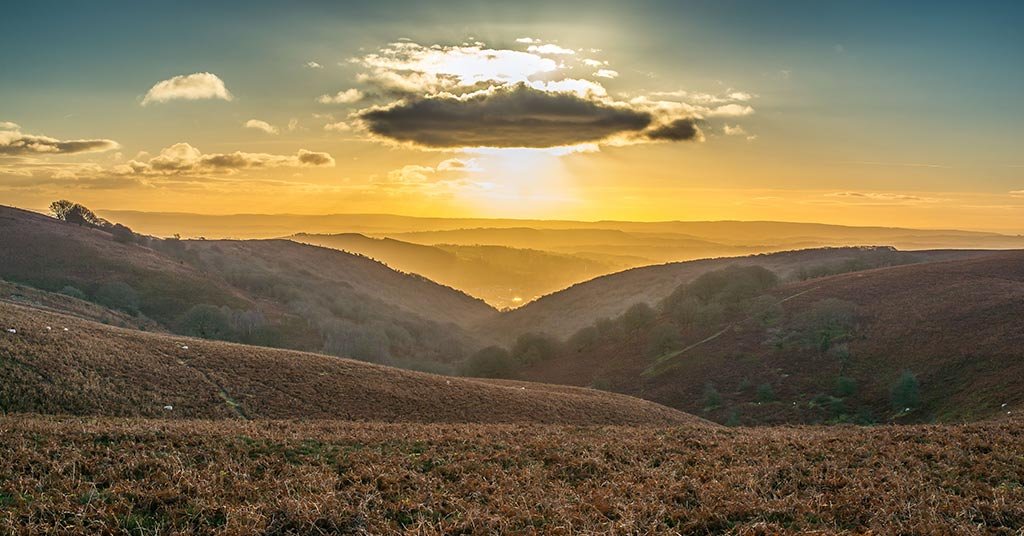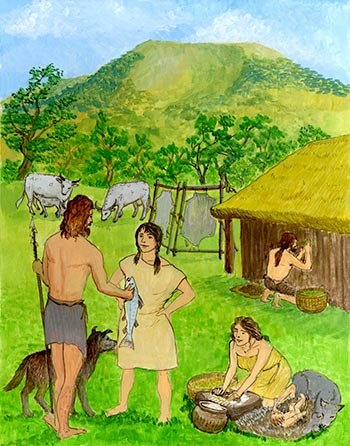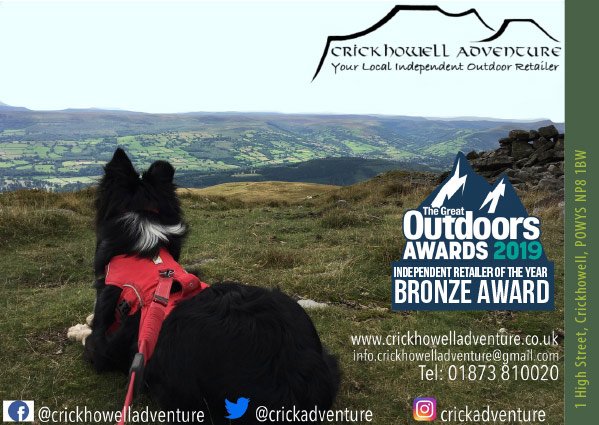Abergavenny Museum has new archaeology displays for you to come and see, thanks to a grant award from Art Fund Treasures Plus/The Headley Trust and Abergavenny Local History Society.

Photo courtesy of Glenn Gameson Burrows ©
We have worked with a group of volunteers who chose the objects to include, helped write text panels and installed the exhibition. There are four main areas – Early People, The Romans, Medieval Times and Tudors and Stuarts. In each section you will find out about life in Abergavenny in the past. There are also activities for families to participate in (whatever the age of your family!).
Below is a taste of what you can find out about in the Early Peoples section – please come and find out more about the other eras:
Abergavenny sits on a mound in a U shaped valley which was created by melting glaciers at the end of the Ice Age.

Artistic impression by Sally Davis of Prehistoric Abergavenny.
We know that humans lived in caves in this area from early Palaeolithic times (circa 30,000 BCE). Objects, including flints, were found during archaeological excavations at nearby Crickhowell. These tell us that nomadic huntergatherers set up camps whilst following migrating herds of animals through the Abergavenny area.
The first people to settle in and around Abergavenny were Neolithic farmers (4000-2500 BCE). Their wooden homes have long since vanished, but flint tools and pottery found in the town suggest a small riverside settlement.
The next people to live in the town were the Beaker People (2300-1800 BCE). Their name comes from the unique vessels often found in their burials , which we think were used in some kind of symbolic drinking ritual.
By 600 BCE the area was occupied by the Silures, a tribe of fierce warriors who built forts on the surrounding hills. Each fort provided a place of safety, with access to water and good animal grazing for between 100 and 150 people.
Iron Age pottery found in Abergavenny suggests that there was also a settlement built close to where Flannel Street is today. This settlement may have been even larger than the Roman fort that came after it.
To find out more about the other periods, come and see us Monday to Saturday 11-1 and 2-4. And for a Christmas treat why not bring the younger members of the family to see Father and Mother Christmas on Sunday 13th December when we will also be running family activities and crafts. For further details phone 01873 854282 or follow us on twitter @abermuseum or on our Facebook – Abergavenny Museum.

